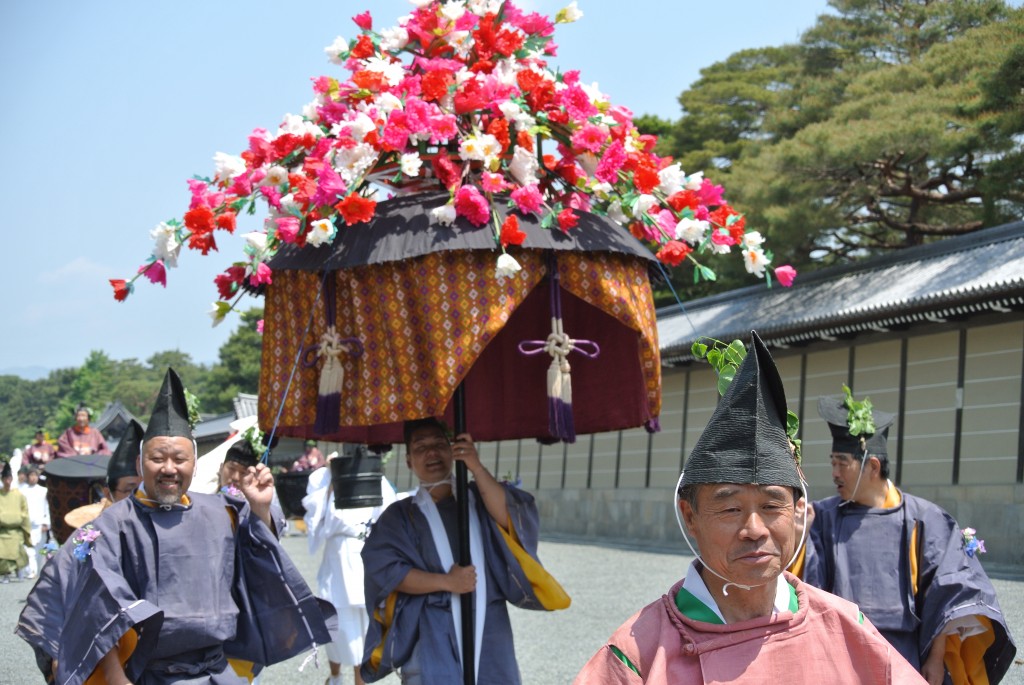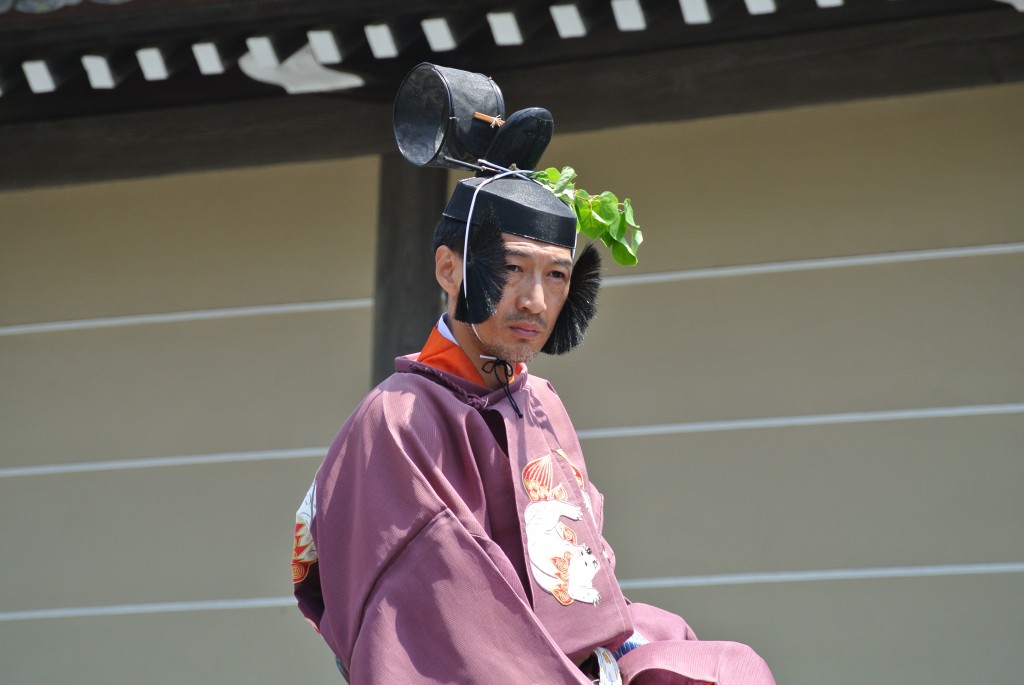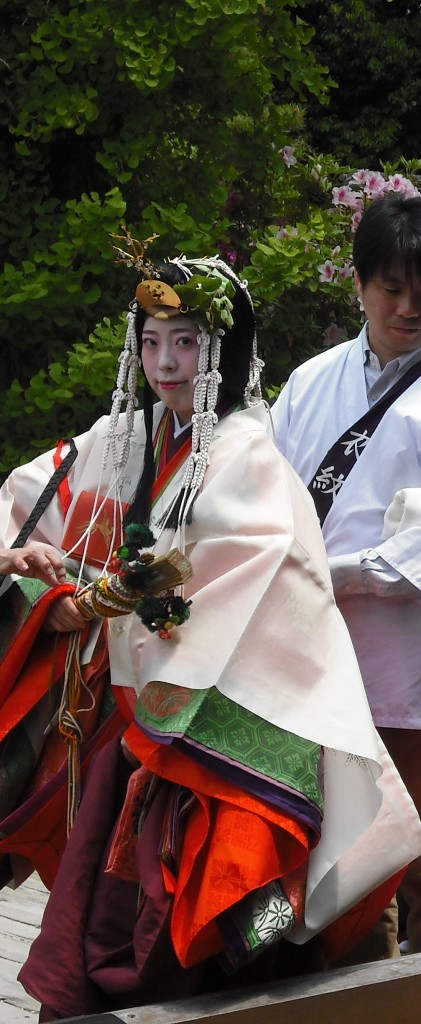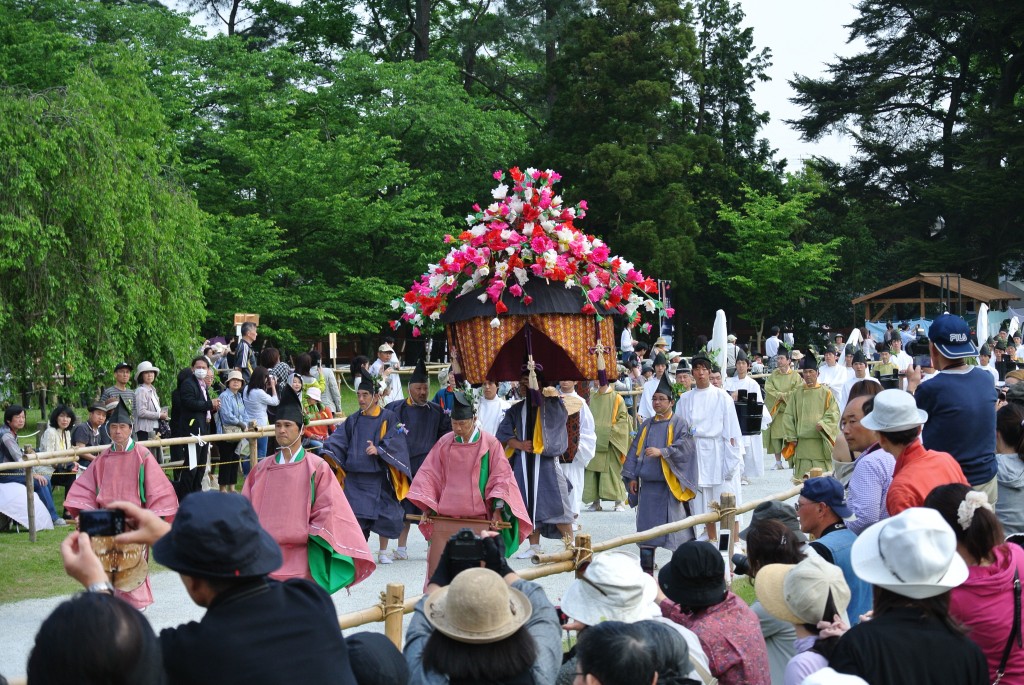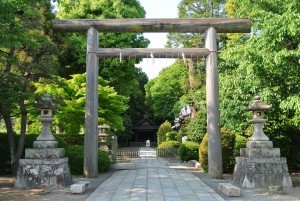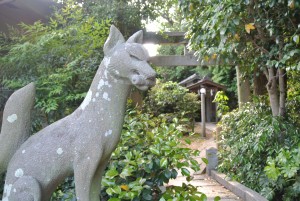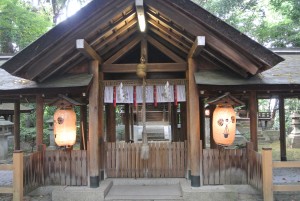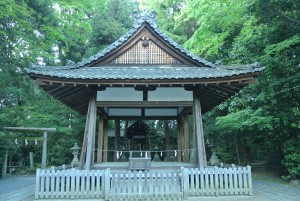

The Corona crisis has caused disruption around the world and dominated the global media. The effect has been drastic in terms of medical resources and made for grim viewing. In Japan the emergency has coincided with the flowering of cherry blossom, symbolic of life’s brief beauty. The mix of Covid-19, cherry blossom and Easter Sunday (tomorrow) inevitably bring to mind thoughts of death and rebirth.
Historically there has been a link between cherry blossom and the plague, perhaps because falling petals were suggestive of the many people falling ill or dying. In Kyoto the association is reinforced each year in a festival at Imamiya Jinja, in which appeasement is sought of a kami spreading disease.
In the Yasurai Festival performers dressed as demons (oni) dance around at the head of a procession of people in Heian robes. Red umbrellas are twirled around, said to bestow good health for a year on those who pass under them. (Red being the colour of blood is often used as a sign of vitality.)
Irony of ironies, the Yasurai Festival has had to be called off this year because of Covid-19. It is not the only casualty of the present crisis, for one of Kyoto’s Big Three Festivals has also had to be cancelled – the Aoi Matsuri in May. It too originated as an antidote to natural disaster, which very probably included pestilence.
The festival is claimed as one of the oldest in Japan, with its roots in the sixth century according to the Nihon shoki (720). It may have been that an epidemic had spread through the country at a time of famine and earthquake. The cause was identified by soothsayers as anger by the deities of the Kamo shrines (Kamigamo and Shimogamo), and in response the Emperor sent an envoy with offerings to appease the kami and pray for a bountiful harvest.
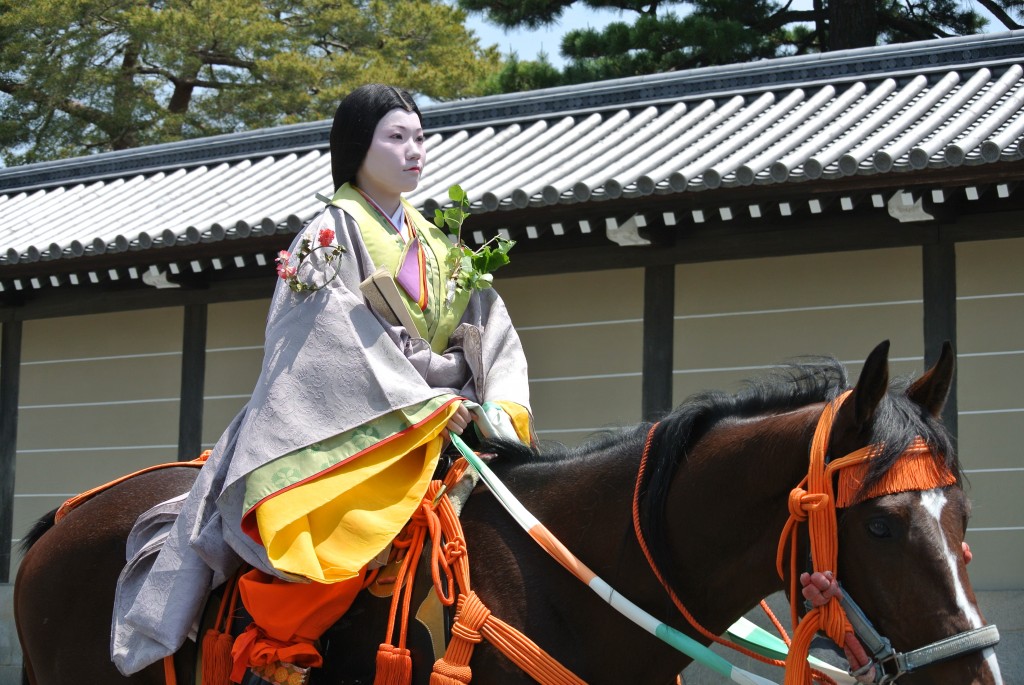
At first the festival was held sporadically whenever there was a major disaster, but with the establishment of Heian-kyo in 794 it became an annual event. At various times the practice ceased altogether, but was subsequently revived, the last such occasions being in 1885 when it was seen as a means of boosting Kyoto following the relocation of the emperor to Tokyo, and in 1953 after the festival was terminated during WW2.
But why is the festival named after the aoi plant? According to Wikipedia, “During the Heian Period, these leaves were once believed to protect against natural disasters such as earthquakes and thunder, and were often hung under the roofs of homes for protection.”
Aoi is often mistranslated as hollyhock, though it is from a different family and closer to wild ginger. The plant has become so rare in recent years that a substitute has had to be used, and the Kamo shrines are presently engaged in projects to replant it. (Look at the pictures below, and you’ll be able to spot a leaf pinned onto participants.)
******************
For a complete overview of Japan’s religious response to plague and pestilence, see this article in the Japan Times. To learn about Yasaka Jinja and the ties of Gozu Tenno and the Gion Festival with disease, see here.

